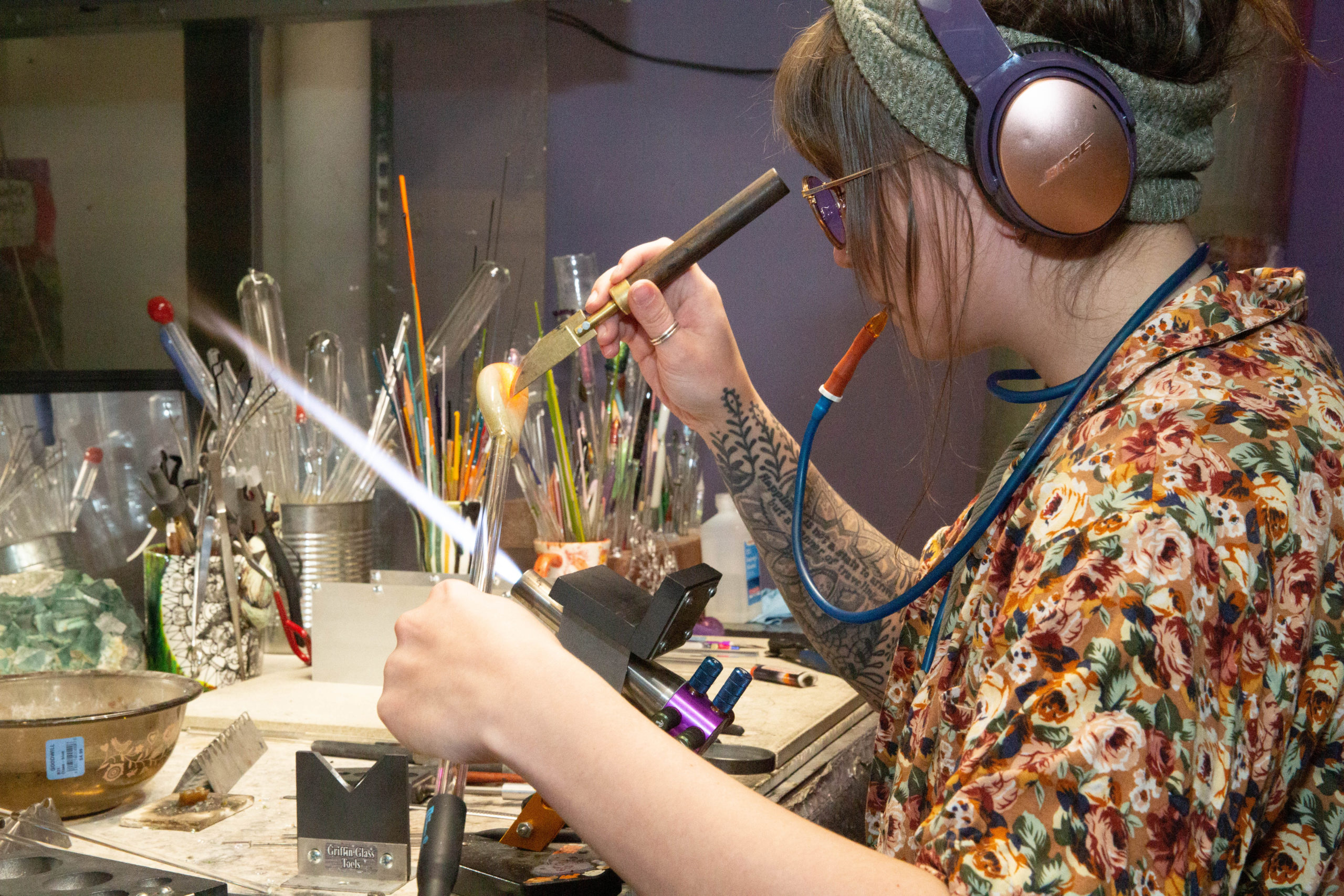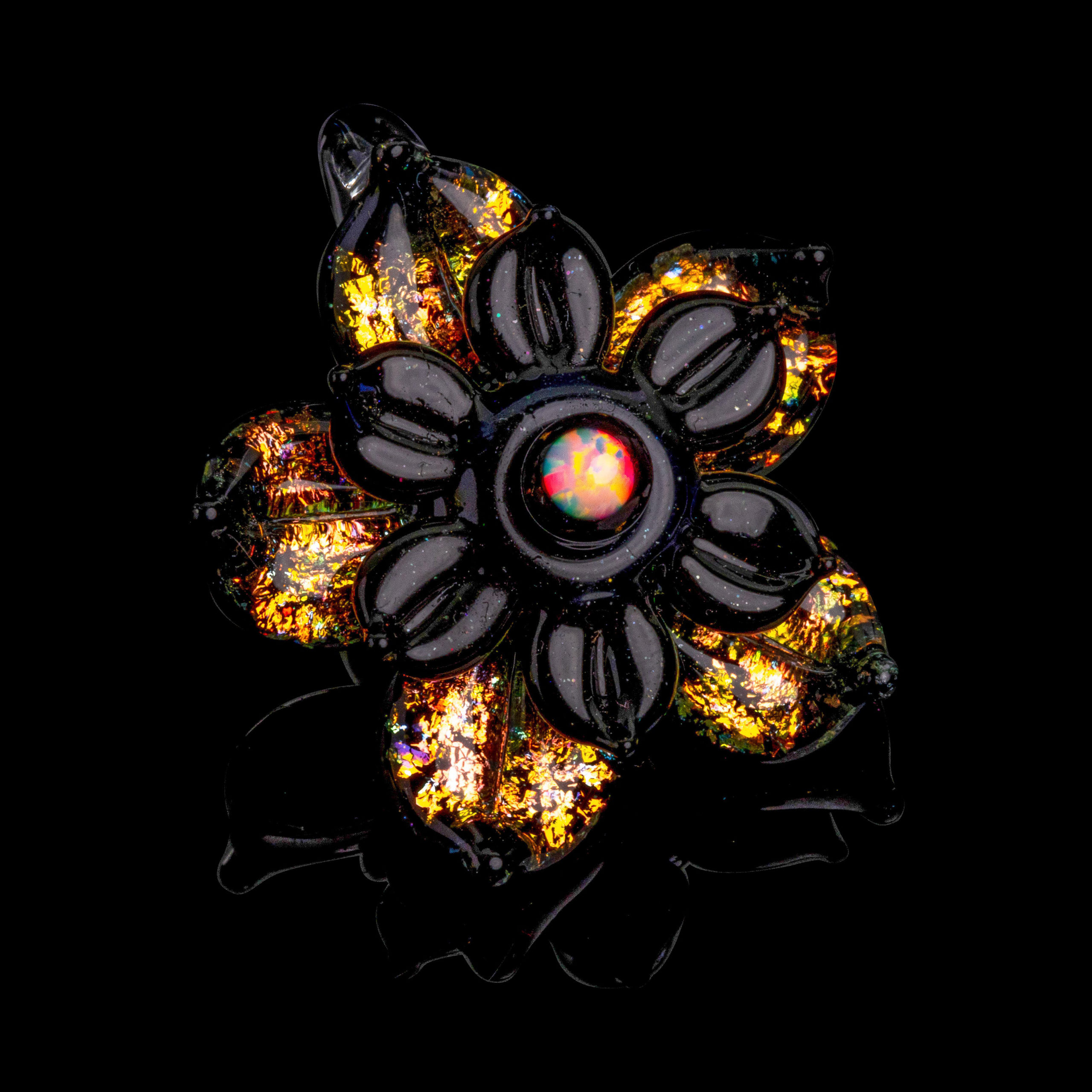
Insta: @marsglassworks
How long have you blown glass?
Since 2013.
What—or who—drew you to the art form?

I was lucky as a teenager to work at a public art studio where I fell in love with glass fusing, ceramics, painting and mosaics. When I was freshly free of school, trying to figure out “what to do with my life,” a documentary called Degenerate Art (Netflix) was released, showing the underground pipe art scene, and I instantly knew I wanted to be a part of it. With few resources in my home state of Wisconsin, I found a Craigslist ad that someone had posted in Denver, looking to teach pipe-making, so I relocated. I’ve been between Colorado and Wisconsin ever since, self-teaching and learning from watching, collaborating or talking to other glass artists.

How do you develop concepts for pieces/what inspires you?
I’m inspired by natural organic forms, mostly plants, as well as femininity and my inner child. I am especially focused on making work that fills gaps in the pipe scene—especially regarding feminine themes and color schemes, as there are so few women working with glass.
What are some of your favorite techniques to include in pieces?

My favorite techniques to use in glass are ones that are relatively uncommon—like working with kinetic spinning parts and including cubic zirconia and sparkles.
What compels you to create pipes?
I’ve always been drawn to underground, countercultural, rebellious things—and to any craft that’s DIY or not conventionally taught in schools. Most of my life I’ve also been an avid cannabis user for its creative benefits and relief from depression and anxiety.
Who are some glass blowers—locally or globally—you admire?
I admire women in glass because it’s challenging to exist and elevate yourself in a male-dominated scene. @LaceFaceGlass was the first female glass artist I knew of, and if she hadn’t been in Degenerate Art, I don’t know if I would’ve thought I could do it myself.














